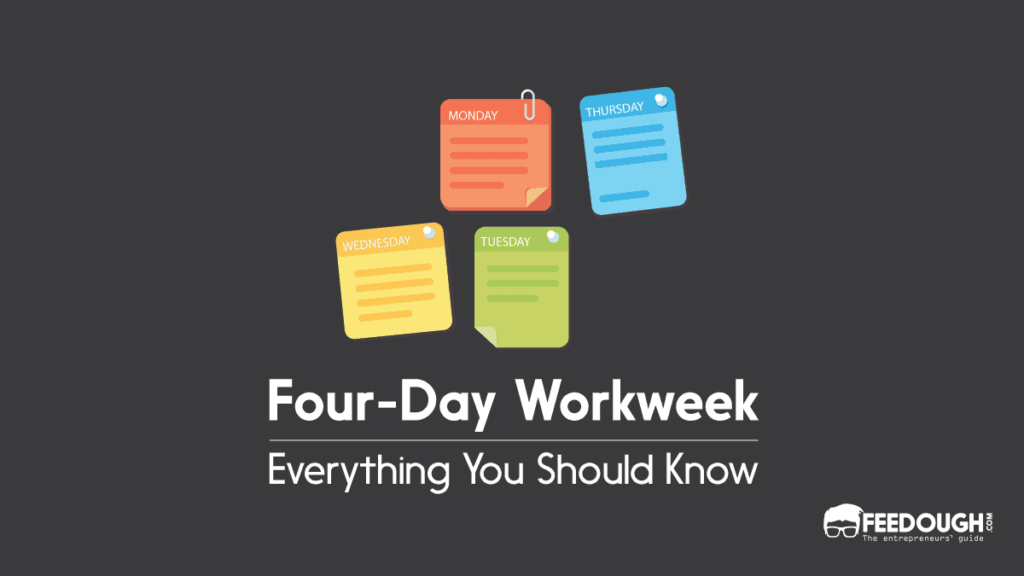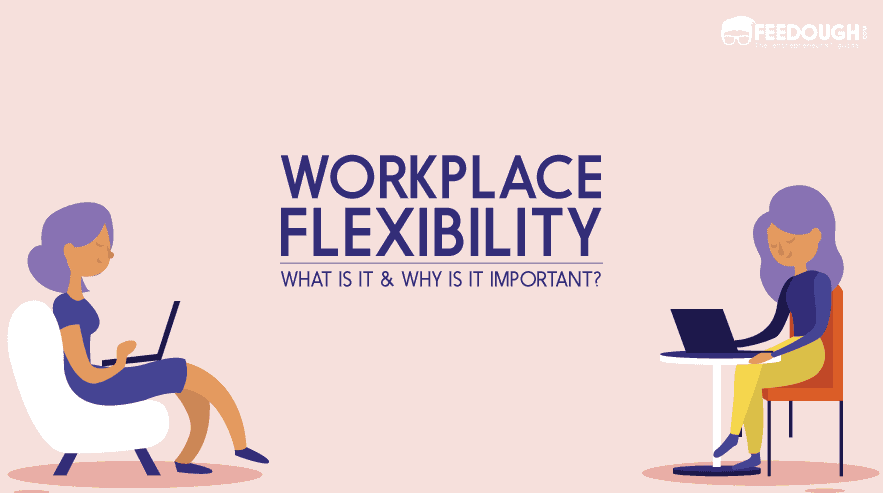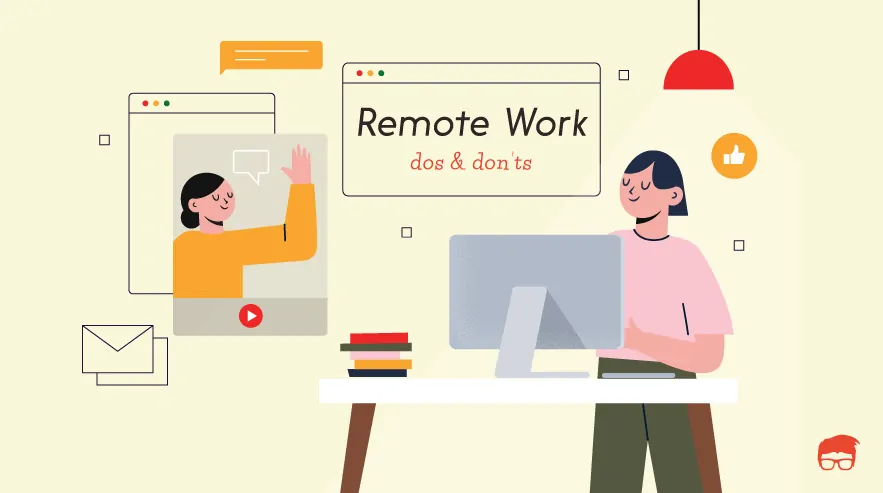An average adult works for 2,622 hours per year in Mexico City. The same adult will work 1,712 hours per year in Denmark. But this doesn’t mean that the person will be more productive in Mexico City. In fact, Mexico City’s GDP per hour is among the lowest worldwide, and Denmark tops the list of productivity per hour.
Moreover, the current working scenario results in 52% of the employees experiencing burnout affecting their well-being and production capacity.
These stats made companies realise the need to update their working structure and move towards a four-day workweek. Though unexpected at first, most companies had a positive experience with a 4-day workweek schedule and wish to continue it in the future.
That being said, the first question that may come to your mind would be if a four-day workweek even possible? Would it suit every industry? In the bigger picture, you would question the productivity levels? What if the employees have to work on reduced pay?
Read on as we are here to answer all your questions.
What Is A Four-Day Workweek?
A four-day workweek is a compressed work schedule where the employees work only four days a week and get three days off with no reduction in pay.
This arrangement calls for a typical working week, but employees are expected to work four days a week instead of the usual five. At the same time, it doesn’t involve increasing the number of working hours per day. The employee still engages for seven-to-eight hours a day. Hence, it demands a shorter workweek along with reduced hours.
Buffer, the social media managing platform, experimented with the idea on its 89 employees. Even though the workweeks were shortened, there was no change in the payscale. Employees were happier and managed to get more work done with lower stress levels.
How Does A Four-Day Workweek Work?
Generally, employers have two different approaches to implement a four-day workweek – 40-hour week and 32-hour week.
- 40 hour week: This is a compressed working schedule where employees work for the usual 40 hours in a week but over four days. This implies that an employee is expected to work 10 hours a day and get three days off. However, when companies tried to compress 40 hours in a four-day schedule, it led to severe employee burnouts. So, this is a less prevalent working arrangement.
- 32 hour week: It suggests a relatively shorter working week with reduced hours. So, the employees work for only 32 hours in a four-day workweek and continue working 8 hours a day.
Based on the needs of the business and employee preferences, the employer can identify any day of the week as an ‘off’. They can either offer a long weekend off or any day midweek as the employee deems it to be fit.
But,
It doesn’t. This working arrangement doesn’t just benefit employees, but it is also beneficial for the employers who see increased productivity and a 20% reduction in variable overhead expenses like electricity and energy consumption.
Moreover,
In a place where work is measured in terms of working hours, you might fear harming productivity levels due to a four-day workweek. But with the recent developments in AI technology, it is possible to achieve the same output or sometimes even more in the same time as earlier. This encourages the notion of measuring work in terms of the output generated, and a four-day workweek becomes easier to implement.
Now, what about employers? Why would they implement such a scheme?
Is Working Four Days A Week Good?
Working for long hours for many consecutive days causes employee fatigue and high stress levels. By the end of the week, employees become so overworked that they tend to become unproductive. They cannot concentrate, and it can severely affect productivity, profits, and the well-being of the employees and the company.
The concept of a four-day workweek comes as a relief from improper working hours. It offers a flexible schedule that allows you to accommodate both personal and work requirements effectively. Moreover, it also allows the employer to shed the non-productive hours of their employees.
Has any company benefited from such an arrangement?
Perpetual Guardian switched to a four-day workweek during a trial by shedding hours from 37.5 to 30 but maintained the pay scale. After a significant run, they claimed a 20% rise in productivity and reduced staff stress levels. The employee work-life balance, which was earlier 54%, jumped to almost 78%. Just by setting productivity as a goal, they focused on results and not working hours.
As a result, the four-day workweek is continuously being proved to be viable for both employees and employers.
What Are The Benefits Of A Four-Day Workweek?
The concept of four-day workweek comes with its own set of advantages for both the employers and the employees.
For Employees
The employee benefits for a four-day workweek are quite evident in the workspace.
- Reduced stress: Employees tend to be happier when they take pleasure in their work and careers. Longer working hours wear them out, and the burden of managing everything is exhausting. With an extra day off, they will have time to accommodate everything and enjoy a flexible work schedule.
- Better work-life balance: When you have more time for non-work activities, they are less likely to distract you during working hours. You will be more concentrated at work with sufficient time to administer your personal life as well. It promotes a better work-life balance.
- More job satisfaction: The search for satisfaction begins with working less. With such a favourable situation, people are happy to have the time and energy to develop their personal and professional life without sacrificing either.
- Increased equality: A 5-day workweek demands a lot of commitment, and it is difficult for people with childcare responsibilities to manage. This causes them, especially women, to leave jobs. A flexible four-day work schedule encourages an equal workplace as employees can spend more time with family, friends with a proper work-life balance.
For Employers
The concept of the four-day workweek isn’t alluring only to employees. It benefits the employer even more.
PPC Protect, a SaaS solution for analysing web traffic, shifted to Monday-to-Thursday week. Not only did the average employee productivity increase, but they were also surprised to find out 16% increase in their task completion processes. With a boost in job applications, positions got filled up faster and were most likely to remain in the position without switching jobs
We can say that employers have their own set of advantages.
- Increased productivity and efficiency: Researchers have concluded that better-rested employees are more productive and committed to their jobs. One of the most overworked nations, Japan, jumped productivity by almost 40% during a short workweek trial in Microsoft.
- More employee engagement: Studies found that even though working hours were reduced by 20%, the time spent by employees on leisure and other non-work websites during office hours fell by 35%.
- Employee recruitment and retention: Four-day workweek proves to be tempting employee recruitment and retention strategy as people are tempted to work in such an environment.
- Reduced carbon footprint: Even one day off can result in huge savings in terms of fuel and power. No one has to commute, and the energy requirements of the office buildings are reduced. Companies have a huge cut in their expenses with an added environmental benefit.
What Are The Disadvantages Of A Four-Day Workweek?
While there are several success stories of a four-day workweek trial, this arrangement doesn’t suit all. If your company needs a quick response to business opportunities or robust customer assistance, as in the case of a sales-based organisation, then cutting off the fifth day might backfire on you.
One wrong approach and your whole business might be affected. For the Slumber Yard trial, authorities compressed the workweek into four days of 10 hours each. But with such long hours, employees got weary and tiresome by the end of the day. They were found surfing over the net, snacking, or chit-chatting, which caused a spike in expenses. The trial failed because of the wrong approach, but even with a planned strategy, your organisational requirements may make it through. The State of Utah dropped its four-day week program even after an increase in productivity and employee morale. Unhappy customers who were unable to access services on Fridays resulted in the withdrawal of the program.
So, even when a four-day workweek has a lot of advantages to its credit, it can also lead to some issues if you don’t have the right support and technology.
- Wrong approach: Many confused the concept of a four-day workweek with a compressed working schedule. When an employee is expected to work for 10 hours a day, it would seemingly decrease productivity levels and hamper the employees’ work-life balance.
For a strategy to generate effective results, one needs to have a calculative approach. To achieve the desired outcomes, a four-day workweek should have a standard 7-8 hour workday. - May affect consumer satisfaction: Some companies claim strong customer service, and if their customers are unable to reach out for support because of reduced working hours, they will be disappointed.
An effective solution would be to use AI assistance like chatbots and AI-powered websites to resolve customer issues when office staff isn’t available.
Which Country Has A Four-Day Workweek?
Though the four-day workweek is a relatively new concept, it has become highly viable for companies. Based on the results of these trial runs, many countries are looking to make this arrangement full-time.
The transition to a four-day workweek won’t be the same for the US as in other countries, but it sure will be implemented as we continue down the road.
Iceland
Where a four-day workweek was popular for private companies, Iceland is one of the first countries that adopted the largest trial in the public sector. The trials were conducted over two years – 2015 and 2017 where over 1.3% of the total workforce, that is, 2500 workers shifted from working 40 hours to 35-36 hours.
The trials turned out to be a massive success as the employees declared themselves to be healthier, relaxed, and more focused. Productivity levels were the same or improved in the majority of the workplaces. As of today, 86% of the workers work shorter weeks or are in the process of opting for it.
New Zealand
New Zealand’s Prime Minister Jacinda Ardern expressed support for the concept of a four-day workweek as it would help employees improve their work-life balance and increase domestic tourism.
60% of the country’s tourism industry involves domestic tourism, and a shorter workweek would encourage employees to take trips around the country, thus contributing to the industry.
Sweden
Swedish government offered the workers to work six hours a day on full pay as a part of the shorter workweek experiment. Even after the trial ended, the workers claimed they appreciated the arrangement as they remained energised. They collectively want shorter workweeks to be permanent.
The employees now wish to do smart work instead of hard work for long working hours and thus achieve optimal and effective results.
Pennsylvania (USA)
Recently, Diamondback covers, which manufactures metal truck bed covers in Pennsylvania, shred 5 hours from the 40-hour workweek of factory workers and offered full payment for the same.
Though they expected a major hike in labour costs regarding the 12.5% dip in working hours, it turned out to be 3% only. Well-rested employees are more efficient in their tasks and work better with a flexible work schedule.
Japan
Japan is infamous for having a culture of overwork in offices. In the recent guidelines, the government proposed an option for companies to opt for a four-day workweek.
Microsoft Japan tested this idea by giving its 2300 employees Fridays off for about a month without a reduction in pay. You will be shocked to know that they found a major increase in productivity by 40%. Employees claimed to be happier and more attentive to their work.
Working long hours causes people to be worked up till the end of the day, which results in low productivity levels. Having a shorter week lets the employers shed the non-productive hours and maintain efficiency.
Should You Implement A Four-Day Workweek?
Whether you should implement a four-day workweek schedule completely depends on the requirements of your organisation and what your employees want. If they want a flexible and improved working schedule, then go for it but start with a trial run so you can test its effects on the organisational goals.
Not far down the road, there will soon be a time when AI manages to exceed human capabilities. Then a four-day workweek would be even easier to implement as the advancements in technology would not let the production levels diminish.
A four-day workweek also promotes social welfare with the possibility to uniformly divide workloads between the ‘overworked’ and the ‘unemployed’.
With the increased successes of the trials of four-day workweeks, everyone is looking to avail the scheme’s benefits and use it to their advantage.
Go On, Tell Us What You Think!
Did we miss something? Come on! Tell us what you think about our article on four-day workweek in the comments section.
A startup enthusiast, optimist and full time learner. With keen interest in finance and management, Khushi believes communication to be the key to every management. Always ready to explore more and walking that extra mile in putting efforts.








